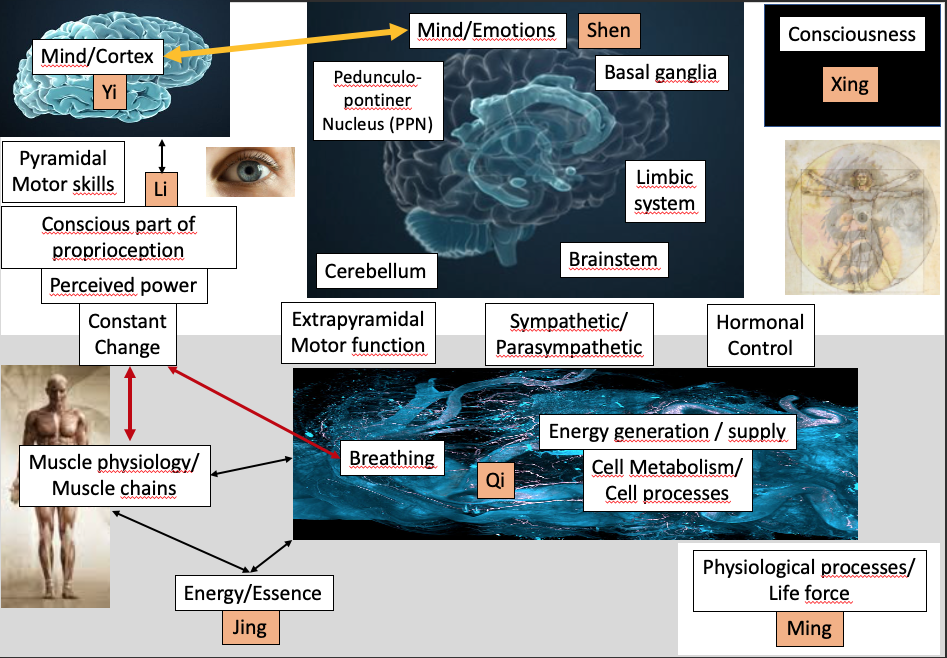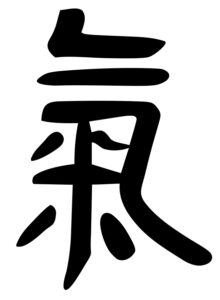
Having dealt with neurobiological basics in previous articles in this section, we now want to shed some “scientific light” on a term that plays an important role in Chinese philosophy:
“Qi”
The term is often translated as “energy”, but also as “breath“. The character shows “water over a rice cooking pot”.
In Daoism, the two poles Yin & Yang separated from the “original Qi” and the “Yin-Qi” and the “Yang-Qi” emerged. Everything that received the “Yang-Qi” rose upwards and everything that received the “Yin-Qi” sank downwards. Heaven and earth came into being. Through the polarity of yang and yin, an energy was created that is expressed in the permanent alternation of yin and yang.
From this alternation arise the forces that keep us alive. In the one the potential of the other is already contained, like in a spring, which one compresses and thus creates the force to enable the renewed expansion.
This existing potential is expressed in Daoist philosophy, in addition to the yin-yang symbol, by the eight trigrams, among others. Each trigram consists of three lines, with a solid line representing yang and a broken line representing yin.

For example, three solid lines represent heaven, and three broken lines represent earth. One broken line between two solid lines stands for fire and one solid line between two broken lines stands for water. The trigrams are meant to represent the many ways in which the two polarities change, and to explain how the polarities are reflected in the world around us.
The three lines can be arranged in eight different ways, therefore there are 8 phases of change, which in turn can be combined in different ways. This results in Daoism in the “10,000 things”, which stands for the entire world.
In summary, we can say (very simplified) that “Qi” in Daoism is the energy that gives the world a form through the alternation between Yin and Yang and the living beings the “life force” to exist.
Now, it is important to know that the ancient Chinese worldview is based on a descriptive science that tries to identify and explain the principles behind the things around it. It is not based on physical principles like “Western” science. It is remarkable how accurately people used to understand the world around them, because they postulated that there must be a “breath of life” that we take in with breathing and food and that keeps us alive. It must be it, which produces the forces in my body and which lets me think and act (on this idea one came by the way not only in China).
If we now take a look at this “breath of life” from a western physiological point of view, then we find that “Qi”is
ΔG0′ = -30,5 [kJ-mol-1] (= group transmission potential of the hydrolysis of ATP)
This is the energy released when adenosine tri-phosphate (ATP) is broken down with water to adenosine di-phosphate (ADP) and phosphate.
ATP is needed in muscle for all muscle activity.
In Daoist philosophy, without “Qi”, neither Yi (mind) nor Shen (spirit) can exist.
This is also completely logical from a Western point of view, because without ATP, the brain is nothing more than a useless and dead pile of cells. Without ATP no action potential, without action potential no brain activity.
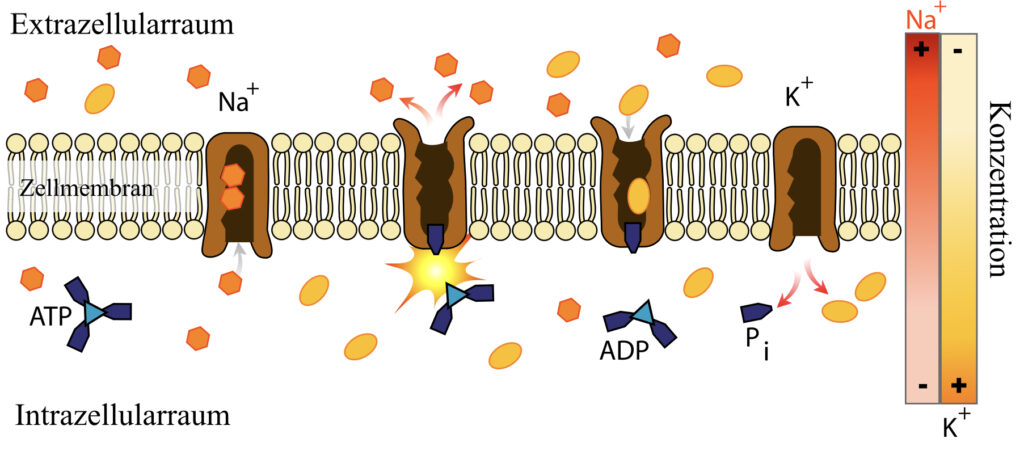
In the brain, ATP is mainly needed to “drive” the Na+-K+-ATPases (sodium-potassium pump), which maintain the resting membrane potential of the nerve and glial cells and thus ensure the electrical excitability of the nerve cells. Only this can then give rise to the action potential, which spreads across the nerve cells and can jump to other nerves via synapses, ultimately leading to excitation of the various neuronal networks.
The brain’s energy metabolism is about 20 watts, which is roughly equivalent to 7mMol of ATP per minute. To do this, it requires about 1/5 of the total oxygen absorbed by the organism. The normal oxygen consumption of the brain is 3 ml O2 per 100 g brain tissue and minute, blood flow is 54 ml/100 g brain tissue and minute, and glucose consumption is 31 μmol/100 g brain tissue and minute.
To provide ATP, the brain requires, in addition to oxygen, a continuous supply of glucose via blood flow. How this happens exactly can be found in biochemistry books (keywords would be respiratory chain, citrate cycle, oxidative phosphorylation, chemiosmotic coupling, etc.).
So it is quite legitimate to say “Qi” is contained in food (carbohydrates, i.e. sugars, fats and proteins) and air (oxygen). All of this is needed to turn ADP into ATP, which we in turn need to trigger action potentials and make our muscles work.
ΔG0′ = -30.5 [kJ-mol-1] is the energy released when ATP becomes ADP. It is used in the body to move sodium out of the cell against the concentration gradient and to move myosin heads. To turn ADP back into ATP, you need oxygen, water and either sugars, fats or proteins.
Of course, one could now go and see how the energy “gets” into the respective sugars, fats or proteins. But that would go beyond the scope of this article, because explaining the function of chlorophyll in detail is too time-consuming.
To make it short: ultimately the “energy” comes from the sun and is only converted further and further until we either take it to us through food (plants or animals that have eaten the plants) or breathe it in as oxygen.
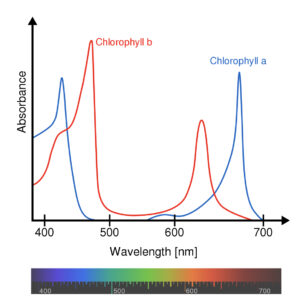
Very, very simplified one can say now that Qi is light, since ΔG0′ = -30.5 [kJ-mol-1] was always “captured” at some time by a chlorophyll from electromagnetic radiation.
So without “Qi” there is neither life, nor thinking, nor moving. Since the electromagnetic radiation can be “stored” in different ways (sugars, fats, proteins, oxygen etc.) there are therefore also different kinds of “Qi”. People have observed this before, too, and only described it differently.
Where ATP is ADP where O2 is also CO2, where a wave, there a particle.
“Qi” is ultimately energy in the form of electromagnetic radiation, which can be wave (yin) and particle (yang).
One could go now of course also still and “wave” and “particle” further to break down there “energy” further.
This would then bring us into the world of quantum mechanics and harmonic oscillators, which describe the principle of yin and yang in the physical world and are ultimately found everywhere in quantum mechanics as well as in classical physics.
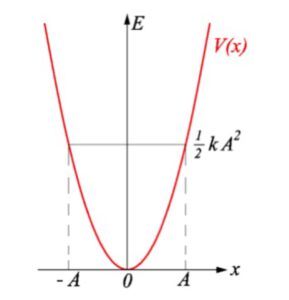
As we can see, “Western science” and Eastern philosophy are not mutually exclusive. Much of what people used to figure out by observing and analyzing can be explained today in “modern” terms, and today’s explanations do not contradict the observations of that time.
In the martial arts, the modern explanations do not help to learn the physical skills, because for that one needs the pictorial ideas of the earlier descriptions. They are the ones that can create the right neural connections in the brain. The images have to be combined with feelings and perceptions to create a harmonious whole. Formulas and physiological findings cannot do this.
